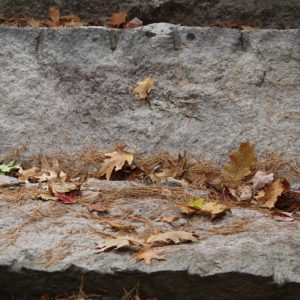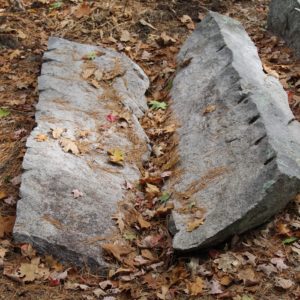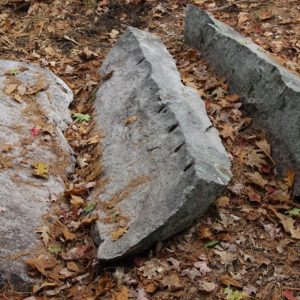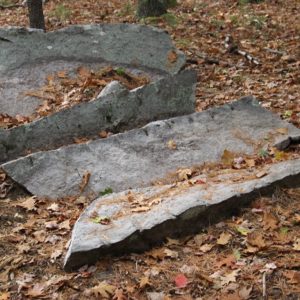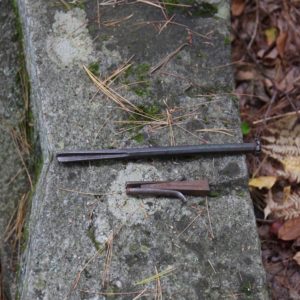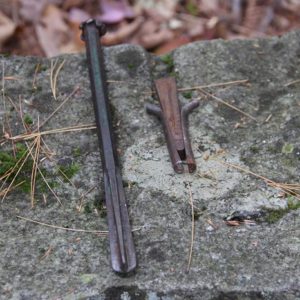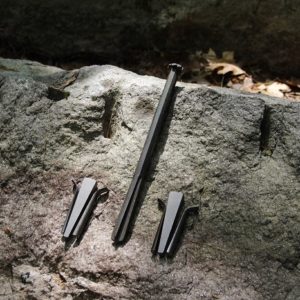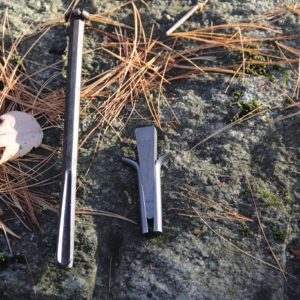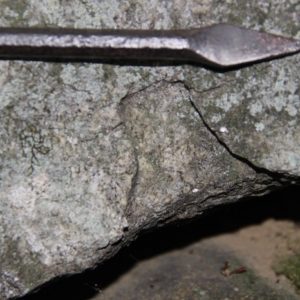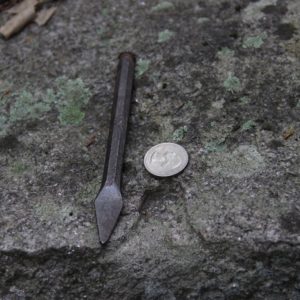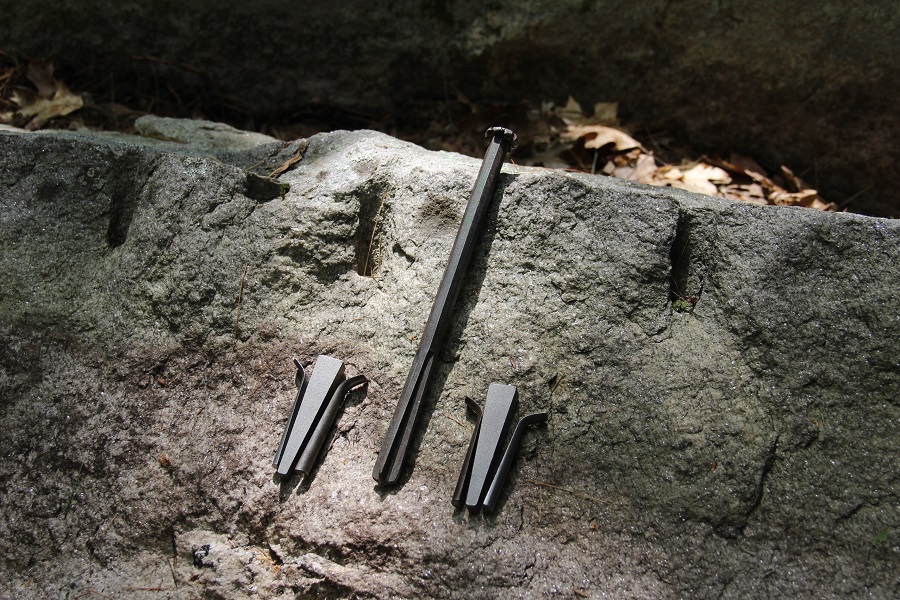
Story and photos by Dave Butler
July 2020 - The Piscataquog Land Conservancy acquired the 330-acre Florence Tarr Wildlife Sanctuary in July 2017. In the fall of that year, a team of volunteer trail builders working on a section of trail over Holbrook Hill at the western end of the property discovered a large boulder that had been cut into pieces, apparently by hand. It is actually not unusual to find stone in the forest which was cut with hand tools in the 19th century. Farmers quarried stone for sills, steps, and fence posts. Road crews quarried stone for use in culverts and bridges. Since Holbrook Hill is the highest point in Bedford, it would have been a good place to quarry granite back when horse power, not horsepower, was used: any stone that was harvested could be moved down the hill to Holbrook Hill Road, then on to its final destination (likely a local farm).
Two main methods were used to split stone by hand in the 19th century. According to the NH Division of Historical Resources, the flat wedge method came into use around 1800 and the plug & feathers method came into use around 1830. The flat wedge method uses a cape chisel to create 1-inch deep slots spaced evenly across the face to be split. In each slot a steel wedge and two shims of sheet iron are placed. The wedges are then hammered one at time repeatedly, going deeper into the slots until the stone splits. Stone split with this method is identified by the row of trapezoid-shaped depressions along the edge that was split (see photo).
The plug & feathers method uses either a single-bladed steel plug drill with a V point, or a double-bladed steel star drill with a V point. Each hole is created by striking the drill repeatedly with a 5-pound hammer. A helper is required to hold the drill (and for the plug drill rotate the drill 90 degrees between blows). Once the holes have been “drilled”, a wedge-shaped steel plug and two shims are inserted into each hole. As with the flat wedge method, the wedges are hammered deeper into the holes until the stone splits. Stone split with this method has the familiar 2-3 inch deep round holes along the edge that was split. The Holbrook Hill boulder was split using this method.
Now that we know when each stone-splitting method was first employed, can we make assumptions about who quarried the boulder atop Holbrook Hill? From the History of Bedford, we know that Deacon John Holbrook moved to Bedford in 1803 and acquired a “large farm”. He had 5 sons between 1790 and 1803, and four of them were given acreage from within the original large farm. Based on the ages of the Holbrook sons and the approximate date that the plugs & feathers method came into use (1830), I like to think that the boulder could have been cut by the Holbrook sons as they built up their farms.
It seems odd that some of the cut stones were left behind in the pasture (now forest) after all that work. The pieces left behind do not have the required sheer faces, so were likely not useable for their intended purpose. This could be because the granite in this particular boulder doesn’t cut cleanly, or because it took the crew a few cuts to get the hang of it. There is an art to cutting glacial erratics, since different boulders, brought by the glacier from different sources upstream, can have different characteristics.
Dave Butler of Bedford is a member of the PLC Board of Trustees and Stewardship Committee. This article originally appeared in the Spring/Summer 2020 edition of the PLC newsletter.
